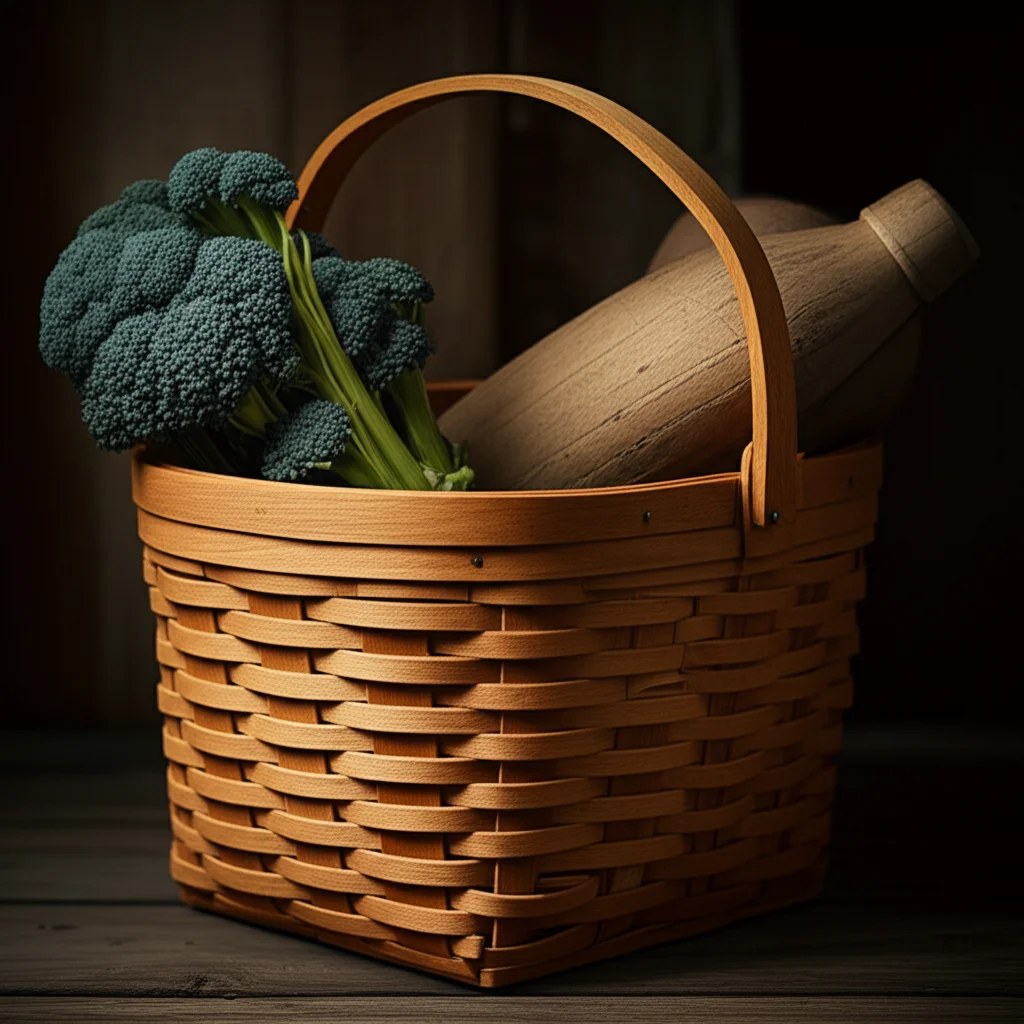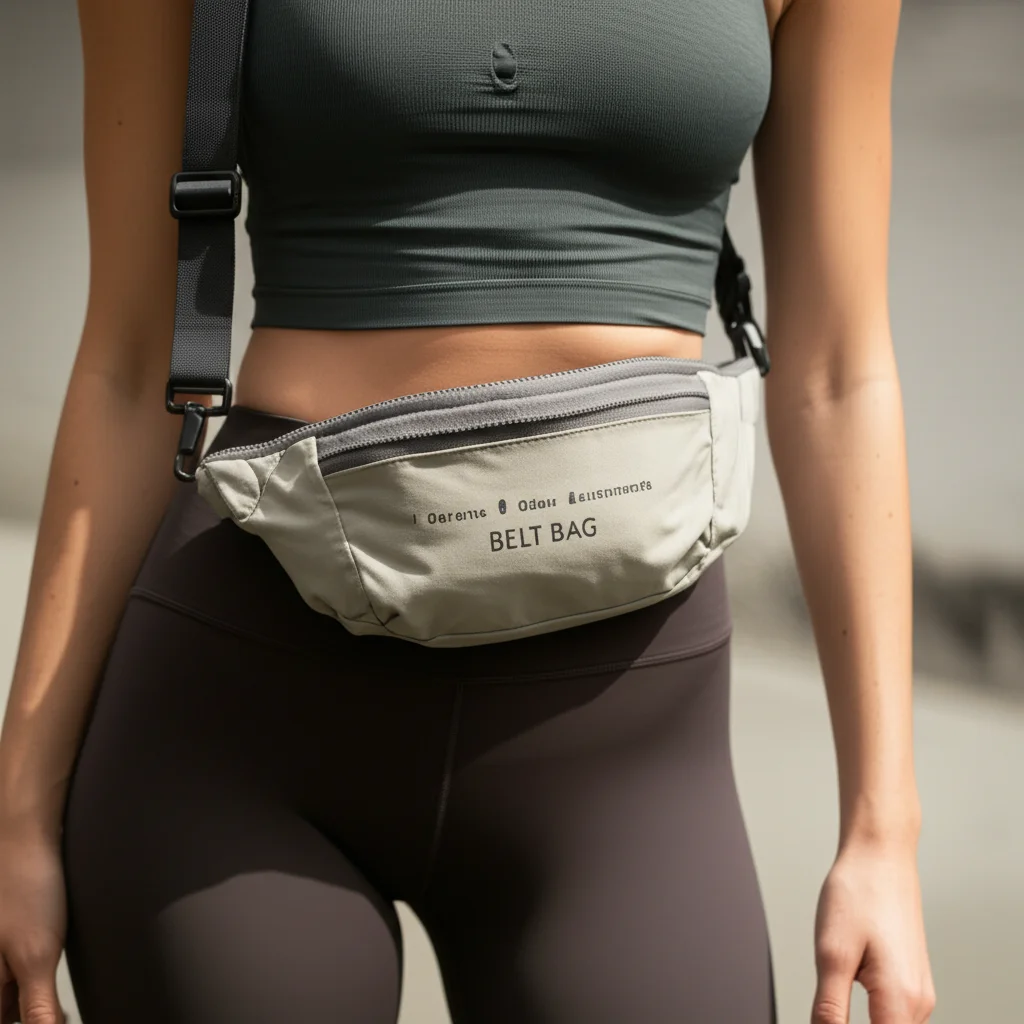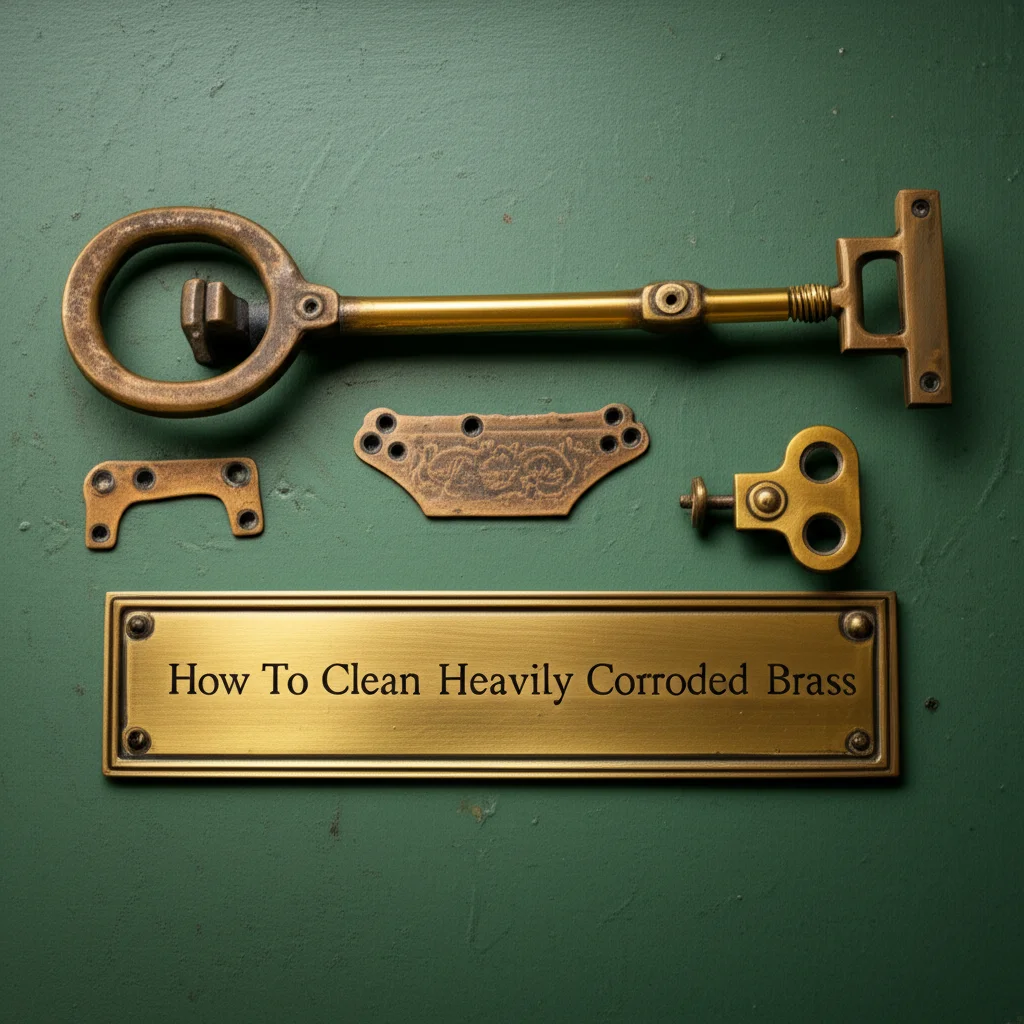· Todd Martin · Home Care · 19 min read
How To Clean Longaberger Basket

Restore Your Longaberger: How To Clean Baskets Effectively
Longaberger baskets hold a special place in many homes. These hand-woven treasures are not just storage; they often carry family memories and serve as cherished decor. Over time, dust, spills, and general use can affect their beauty. Learning how to clean Longaberger basket properly ensures these valuable pieces retain their charm and integrity for years.
I understand the desire to keep these collectibles looking their best. Improper cleaning can cause damage, so a gentle approach is key. This article will guide you through the correct steps. We will cover everything from basic dusting to tackling stubborn stains and preventing future issues. By the end, you will feel confident maintaining your Longaberger collection.
Takeaway
To clean your Longaberger basket safely, remember these key steps:
- Always start with dry cleaning methods like dusting or vacuuming loose dirt.
- Use minimal moisture and mild, natural cleaning agents for spot treatment.
- Ensure thorough air drying in a well-ventilated area, away from direct sunlight.
- Implement regular preventative care to reduce the need for deep cleaning.
To clean a Longaberger basket, first, remove loose dirt with a soft brush or vacuum. For deeper cleaning, use a damp cloth with a small amount of mild, diluted soap, wiping gently. Blot stains, do not rub. Rinse with a barely damp cloth and air dry completely in a well-ventilated area, away from direct heat or sun, to prevent damage.
Understanding Your Longaberger Basket’s Construction
Before you begin to clean Longaberger basket, understanding its construction is important. Most Longaberger baskets use hardwoods like maple, oak, or cherry. These materials are strong but sensitive to moisture and harsh chemicals. The weaving process creates a durable structure. However, it also creates small crevices where dust can collect.
Longaberger baskets often feature natural wood stain finishes or painted details. These finishes protect the wood but can be stripped by strong cleaners. Many baskets also include fabric liners or protectors. These fabric parts require separate cleaning methods. Knowing what your specific basket is made of helps you choose the right cleaning approach. This knowledge prevents accidental damage during the cleaning process.
You will find a wide range of basket types, from market baskets to storage solutions. Each may have unique features. For instance, some have handles, while others come with lids. My own collection includes a variety, and I always check each basket carefully. This step helps me identify any delicate areas. Consider the age of your basket too. Older baskets might have more fragile wood or faded finishes. Always treat vintage items with extra care.
Essential Supplies for Cleaning Longaberger Baskets
Gathering the right tools makes cleaning your Longaberger basket simple and safe. You do not need many specialized items. Most supplies are likely already in your home. Having everything ready before you start saves time and prevents interruptions. This preparation ensures a smooth cleaning process.
Here are the essential items I recommend:
- Soft-bristled brush: A soft toothbrush or a dedicated detailing brush works well. This tool helps remove dust from tight spots.
- Microfiber cloths: Use several clean, lint-free microfiber cloths. They are gentle and absorbent.
- Vacuum cleaner with brush attachment: This is excellent for quickly removing loose dirt. A small handheld vacuum is perfect for this job.
- Mild dish soap: Choose a gentle, pH-neutral dish soap. Avoid harsh detergents or abrasive cleaners.
- Distilled water: Using distilled water prevents mineral deposits. Tap water can leave marks, especially in hard water areas.
- Spray bottle: A small spray bottle helps you apply water or cleaning solution lightly.
- Cotton swabs: These are useful for very small, detailed areas.
- Old towels or newspapers: Use these to protect your work surface.
- Gloves: Protect your hands, especially if you have sensitive skin.
Remember, less is more when it comes to cleaning solutions. I always start with the mildest option. This approach minimizes the risk of damage. You can always increase the strength slightly if needed. However, harsh chemicals should never touch your Longaberger basket. They can strip finishes or warp the wood. Using the right tools makes the entire process efficient.
Step-by-Step Dry Cleaning for Longaberger Baskets
Starting with dry cleaning is the safest first step when you want to clean Longaberger basket. This method removes most of the loose dirt and dust. It reduces the need for wet cleaning. This helps preserve the wood’s natural finish. I always begin with this dry approach for my own baskets.
Here is how you can perform a thorough dry clean:
- Prepare your workspace: Lay down old towels or newspapers on a flat surface. This protects your table and catches falling dust.
- Gentle dusting with a soft brush: Use a soft-bristled brush to gently sweep dust from the basket. Start from the top and work your way down. Pay close attention to the weaves and crevices. The soft bristles will not scratch the wood. This step is crucial for dislodging embedded dirt.
- Vacuuming loose debris: Attach the brush nozzle to your vacuum cleaner. Set the vacuum to a low suction setting. Carefully vacuum the entire basket. This pulls out dust and small particles that the brush might miss. Be gentle around any handles or decorative elements. The goal is to remove as much dry matter as possible.
- Air compressor (optional): For very stubborn dust in tight corners, a can of compressed air can help. Hold the can upright and spray short bursts. Do not spray too close to the wood. This method pushes dust out of hard-to-reach areas.
- Microfiber wipe down: After brushing and vacuuming, use a clean, dry microfiber cloth. Gently wipe down the entire surface of the basket. This picks up any remaining fine dust. The cloth’s fibers trap particles effectively.
This dry cleaning routine should be done regularly. It prevents heavy dust buildup. Heavy dust can become harder to remove later. It also helps you identify any areas needing more attention. This proactive care keeps your basket looking its best without harsh treatments. Consider cleaning your Longaberger basket every few months. This keeps it pristine.
Spot Cleaning and Tackling Stubborn Stains
After dry cleaning, some Longaberger baskets might still show signs of wear. Stains from spills, dirt, or even just age can appear. Spot cleaning is the next step to address these specific areas. It is important to approach this cautiously. Excessive moisture can damage the wood. You want to target the stain without saturating the basket.
Here is my method for effective spot cleaning:
- Prepare your cleaning solution: Mix a very small amount of mild dish soap with distilled water. Use a ratio of about one teaspoon of soap to two cups of water. Stir it well to combine. You want a very dilute solution.
- Test in an inconspicuous area: Before applying the solution to the stain, find a hidden spot on the basket. Dab a tiny amount of the solution onto this area with a cotton swab. Let it sit for a few minutes. Check for any discoloration or adverse reactions. If the wood looks fine, proceed. This test is vital to prevent damage to your cherished item.
- Apply the solution to the stain: Dip a clean microfiber cloth or cotton swab into the solution. Wring out excess liquid. The cloth should be barely damp, not wet. Gently blot the stained area. Do not rub vigorously. Rubbing can spread the stain or damage the finish. Work from the outside of the stain inward. This helps prevent spreading the mark.
- Blot and rinse: After blotting the stain, use a second clean, barely damp microfiber cloth (with plain distilled water). Gently blot the area again to “rinse” away any soap residue. It is important to remove all soap. Soap residue can attract more dirt over time. You might need to repeat the blotting and rinsing process a few times for stubborn stains. For general stains on wood, these techniques are effective.
- Addressing specific stain types:
- Grease stains: For light grease marks, a very small amount of cornstarch or baking soda can absorb the oil. Sprinkle it on, let it sit for an hour, then brush off gently.
- Water marks: These can sometimes be buffed out with a dry, clean microfiber cloth if caught early. If persistent, a slightly damp cloth with a tiny bit of mineral oil on it, applied very sparingly, might help, followed by immediate drying.
- Mold or mildew: For light mold, a solution of one part white vinegar to two parts water can be effective. Apply it sparingly with a cotton swab. Immediately wipe with a clean, damp cloth. Then dry completely. For more severe cases, you can read how to clean mold with vinegar.
- Food stains: Tackle these quickly. Blot up any liquid. Then use the mild soap solution as described above.
Always work slowly and with patience. This helps you achieve the best results. Remember, the goal is to remove the stain without harming the basket’s natural beauty.
Drying and Restoring Your Longaberger Basket
Proper drying is critical after any wet cleaning for your Longaberger basket. If you do not dry the basket completely, moisture can lead to serious problems. These problems include warping, mold growth, or damage to the wood finish. I always ensure my baskets are thoroughly dry before putting them away. This step is as important as the cleaning itself.
Follow these steps for optimal drying and restoration:
- Initial blotting: Immediately after spot cleaning or rinsing, use a clean, dry microfiber cloth. Gently blot the cleaned areas to absorb as much surface moisture as possible. Press firmly but do not rub. This removes standing water that could seep into the wood.
- Air drying in a well-ventilated area: Move the basket to a location with good air circulation. A room with an open window or a fan works well. Avoid direct sunlight. While sun can dry quickly, it can also cause the wood to fade, crack, or warp. Direct heat sources like radiators or heaters can also cause warping.
- Position for even drying: Elevate the basket slightly if possible. You can place it on a wire rack or two elevated bars. This allows air to circulate around all sides. Turn the basket occasionally to ensure even drying. This prevents moisture from settling in one spot.
- Patience is key: Drying can take several hours, or even a full day. The time depends on how much moisture was used and the humidity level. Do not rush this process. Feel the basket all over, especially in the weaves and on the bottom. It must be completely dry to the touch before moving it.
- Conditioning (optional): Once completely dry, you can apply a very small amount of wood conditioner or a specific basket care product. Choose a product designed for natural wood. Apply it sparingly with a clean, soft cloth. Buff gently to restore the wood’s luster. This step helps to rehydrate the wood and protect it. It makes the wood look rich and healthy. You can apply a similar principle when you clean wood floors.
Never store a basket that feels even slightly damp. Any residual moisture can cause mildew. It can also cause the wood to weaken over time. Proper drying ensures your Longaberger basket remains strong and beautiful.
Preventing Future Damage and Regular Maintenance
Prevention is better than a cure, especially for cherished items like Longaberger baskets. Regular, gentle maintenance prevents the need for deep cleaning. This approach also extends the life and beauty of your baskets. I find that a little effort often saves a lot of work later. Protecting your basket from the start is wise.
Here are my best tips for preventing future damage and maintaining your basket:
- Dust regularly: Dust is the most common culprit for making baskets look dull. Use a soft brush or a dry microfiber cloth to dust your baskets weekly or bi-weekly. This prevents dust from embedding into the wood fibers. Regular dusting minimizes the need for wet cleaning.
- Use liners: Longaberger offers fabric liners for many of their baskets. These liners protect the basket from spills, food residue, and scratches. They are much easier to clean than the basket itself. Simply remove the liner and wash it according to its care instructions. For woven baskets used in kitchen contexts, like a proofing basket, liners are especially useful.
- Avoid direct sunlight and extreme temperatures: Prolonged exposure to direct sunlight can fade the wood and dyes. Extreme heat or cold can cause the wood to crack or warp. Store your baskets in a stable environment. A consistent room temperature is ideal. Avoid placing them near windows, radiators, or air conditioning vents.
- Handle with care: Always lift your baskets by their handles or the base. Avoid dragging them or putting excessive weight in them. This prevents strain on the weaving and handles.
- Protect from moisture: Keep your baskets away from humid areas like bathrooms or damp basements. If using a basket in a damp area, like for laundry, consider lining it with a plastic bag inside the fabric liner. This adds an extra layer of protection against moisture.
- Do not use harsh chemicals: Never use abrasive cleaners, furniture polish, or strong detergents on your Longaberger basket. These products can strip the finish, dry out the wood, or leave a sticky residue. Stick to the mild soap and water solution if wet cleaning is necessary.
- Rotate display baskets: If you have baskets on display, rotate them occasionally. This ensures even exposure to light and air. It prevents one side from fading or drying out more than another.
- Store properly: When not in use, store baskets in a clean, dry, and well-ventilated area. Avoid stacking heavy items on top of them. This can cause deformation. For more general advice on caring for wicker basket materials, similar principles apply.
By following these simple preventative measures, you can significantly reduce the wear and tear on your Longaberger baskets. This keeps them looking beautiful with minimal effort. Consistent care protects your investment.
Addressing Common Longaberger Basket Issues
Even with the best care, Longaberger baskets can sometimes develop specific issues. These might include mold, warping, or persistent odors. Knowing how to address these problems can save your cherished basket. I have dealt with these concerns myself. I have found certain methods work best.
Dealing with Mold or Mildew
Mold and mildew thrive in damp, dark conditions. If you notice a musty smell or visible fuzzy spots, act quickly.
- Isolate the basket: Move the affected basket away from other items. This prevents the mold from spreading.
- Dry brush: Take the basket outside, if possible. Use a stiff brush to gently brush off any visible mold spores. Wear gloves and a mask to avoid inhaling spores.
- Vinegar solution: Mix equal parts white vinegar and water in a spray bottle. Lightly mist the affected areas. Vinegar kills mold and neutralizes odors. You can refer to guides on how to clean mold with vinegar for detailed steps.
- Air dry thoroughly: Place the basket in a well-ventilated area to air dry completely. Ensure the moldy spot is fully dry before storing the basket. Sun can help kill mold, but remember to avoid excessive sun exposure to prevent fading.
- Persistent mold: If mold persists, consider a professional restoration service. Do not use bleach, as it can damage the wood and finish.
Correcting Warped Baskets
Warping happens when wood dries unevenly or gets too wet. It can be frustrating to see a basket lose its shape.
- Assess the warp: Determine how severe the warping is. Is it a slight bend or a significant distortion?
- Controlled re-wetting: Very lightly mist the warped area with distilled water. Use a fine spray bottle. Do not soak the wood. You want the wood to be pliable, not wet.
- Reshape gently: Carefully push the warped section back into its original shape. You might need to use clamps or heavy books to hold it in place. Place soft cloths between the clamps and the basket to prevent marks.
- Slow drying: Allow the basket to dry slowly and completely while it is held in its corrected shape. This can take several days. Patience is crucial here. If you dry it too fast, it may warp again.
Eliminating Odors
Baskets can sometimes pick up odors from storage or use.
- Air out: Place the basket outdoors on a dry, sunny day (but not in direct, harsh sun for too long) for a few hours. Fresh air helps dissipate stale smells.
- Baking soda: Sprinkle baking soda inside and outside the basket. Let it sit for 24-48 hours. Baking soda absorbs odors. Then, vacuum it thoroughly.
- Activated charcoal: Place small bags of activated charcoal inside the basket. Seal the basket in a plastic bag for a few days. Activated charcoal is an excellent odor absorber.
By addressing these common issues directly, you can keep your Longaberger baskets functional and beautiful. Always prioritize gentle methods to protect these unique collectibles.
Advanced Cleaning Techniques for Specialized Longaberger Baskets
While general cleaning methods work for most Longaberger baskets, some specialized types require extra attention. Collectors often have specific baskets that warrant a different approach. This might include baskets with intricate designs, those with painted finishes, or baskets that have seen heavy use. I find that a tailored method gives the best results for these unique pieces.
Cleaning Baskets with Painted or Dyed Finishes
Many Longaberger baskets feature beautiful painted or dyed accents. These finishes need careful handling. Harsh cleaners can strip the color.
- Spot test always: Before doing anything, always test your cleaning solution on a small, hidden spot. This is even more important for painted areas.
- Minimal moisture: Use even less water than usual. Your cloth should be barely damp. Excessive water can make painted finishes bleed or peel.
- Gentle blotting, no rubbing: Dab gently at dirty areas on painted parts. Do not rub vigorously. Rubbing can lift the paint.
- Neutral cleaner only: Stick to distilled water or a highly diluted, pH-neutral dish soap. Avoid vinegar on painted areas, as its acidity can react with some paints.
- Quick drying: Immediately blot dry the painted areas after cleaning. This prevents water from sitting on the surface too long.
Handling Baskets with Liners or Protectors
Longaberger often sold baskets with fabric liners, plastic protectors, or wooden inserts. These parts need their own cleaning.
- Remove all inserts: Take out any fabric liners, plastic protectors, or wooden lids. Clean them separately.
- Fabric liners: Most fabric liners are machine washable. Check the care tag for specific instructions. Use a gentle cycle with cold water and mild detergent. Air dry or tumble dry on low. Iron if needed.
- Plastic protectors: Wipe plastic protectors with a damp cloth and mild soap. Rinse thoroughly and air dry. These are usually robust.
- Wooden inserts/lids: Clean wooden inserts like the basket itself. Use a soft brush for dusting and a barely damp cloth for wiping. Dry immediately.
Restoring a Very Dirty or Neglected Basket
For baskets that have been neglected or heavily used, you might need a more patient approach.
- Multiple dry passes: Go over the basket several times with a soft brush and vacuum. Focus on loosening all embedded dirt.
- Pre-soak dust: If dust is truly caked on, a very light mist of plain distilled water can soften it before brushing. Do not wet the basket; just damp the dust.
- Small sections: Work on one small section of the basket at a time. Clean a 6-inch area, dry it, then move to the next section. This prevents the entire basket from getting too wet.
- Professional help: For extremely dirty, moldy, or structurally damaged baskets, consider seeking a professional basket restorer. They have specialized tools and knowledge to save severely compromised pieces. Sometimes, a DIY approach can worsen existing damage.
Remember, the goal is always to preserve the basket’s original condition. These advanced techniques help you achieve that, even with challenging cases. Each basket tells a story; proper care helps it last for generations.
FAQs About Cleaning Longaberger Baskets
Can I use water to clean my Longaberger basket?
Yes, you can use water to clean your Longaberger basket, but sparingly. Always use distilled water mixed with a small amount of mild, pH-neutral dish soap. The cloth should be barely damp, not wet. Excessive moisture can warp the wood, cause mold, or damage the finish, so blot gently and ensure quick, thorough drying.
How do I remove mold from a Longaberger basket?
To remove light mold, first, brush off loose spores outdoors. Then, apply a solution of equal parts white vinegar and water with a barely damp cloth. Blot the affected area gently. Vinegar kills mold and helps with odor. Ensure the basket air dries completely in a well-ventilated space to prevent mold return.
What products should I avoid when cleaning Longaberger baskets?
Avoid harsh chemicals like bleach, ammonia-based cleaners, abrasive scrubs, or strong furniture polishes. These can strip the natural finish, dry out the wood, or cause discoloration. Also, do not use very hot water or steam cleaners, as high temperatures and excessive moisture are damaging to the woven wood.
How often should I clean my Longaberger basket?
For display baskets, dust them weekly or bi-weekly with a soft brush or vacuum. For baskets used regularly, like for storage, a more thorough dry clean every few months is good. Spot clean spills immediately. Deep wet cleaning should only happen as needed for significant dirt or stains, perhaps once a year or less.
Can I clean the fabric liner of my Longaberger basket?
Yes, you can clean the fabric liner separately. Most Longaberger fabric liners are machine washable. Check the care tag for specific washing instructions. Typically, you can machine wash them on a gentle cycle with cold water and mild detergent. Air dry or tumble dry on a low setting to prevent shrinkage or damage.
Preserve Your Longaberger Legacy
Taking the time to clean Longaberger basket items properly ensures they remain beautiful and functional for many years. These baskets are more than just home accessories; they are cherished pieces of history, often carrying sentimental value. By understanding their unique construction and applying the right cleaning techniques, you protect your investment and preserve their inherent charm.
Remember, gentle methods are always best. Start with dry dusting, move to careful spot cleaning with minimal moisture, and always ensure thorough drying. Regular maintenance and preventative care will significantly extend the life of your Longaberger collection. Your efforts will keep these woven treasures looking their best, ready to be admired and used by future generations. Keep enjoying your beautiful Longaberger baskets!
- Longaberger basket care
- Woven basket cleaning
- Basket maintenance
- Vintage basket restoration
- Home decor cleaning





